Friday 16 January 1942
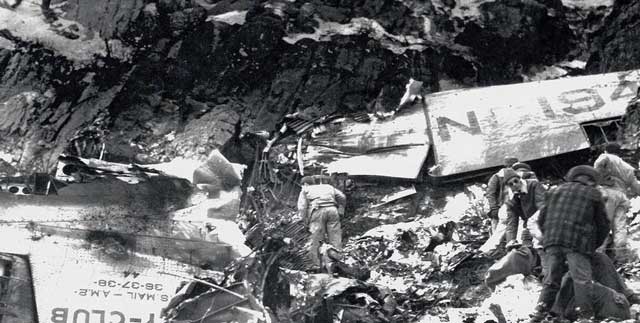 |
| Recovery team at the site following the Carole Lombard crash on Mount Potosi of 16 January 1942. |
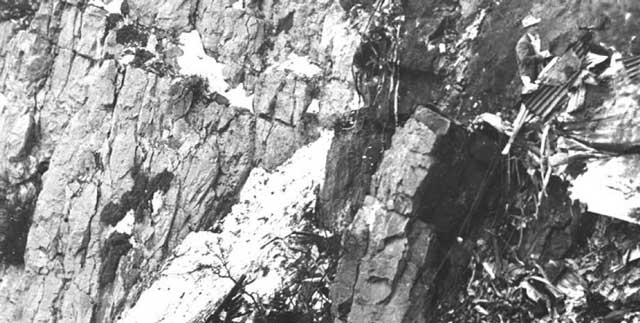 |
| The impact point on Mount Potosi of the Carole Lombard crash of 16 January 1942. |
Upon the basis of the foregoing findings and of the entire record available at this time, we find that the probable cause of the accident to aircraft NC 1946 on January 16, 1942, was the failure of the captain after departure from Las Vegas to follow the proper course by making use of the navigational facilities available to him.In essence, the CAB finds that pilot error caused the Lombard crash. The pilot or co-pilot apparently entered a proper course heading for departures from the usual stopover point, Boulder City, instead of for Las Vegas. Inevitably, some conspiracy theories arise later about the plane being shot down by German spies, an engine caught fire, and so forth. The war has a direct influence on causing the Lombard crash, as local authorities had turned off (due to vastly overblown war concerns) safety beacons on the mountain that would have warned the crew of the danger. Ms. Lombard, whose real name is Jane Alice Peters Gable, had suggested to husband Clark Gable (his real name, though it was a shortened form of William Clark Gable) that he join the military. The tragic death of his wife Carole Lombard ultimately leads Clark Gable to enlist in the US Army Air Force. Some of the plane's remains may still be seen on the mountainside, probably because they are very difficult to reach.
There is original footage below of Lombard and the recovery process.
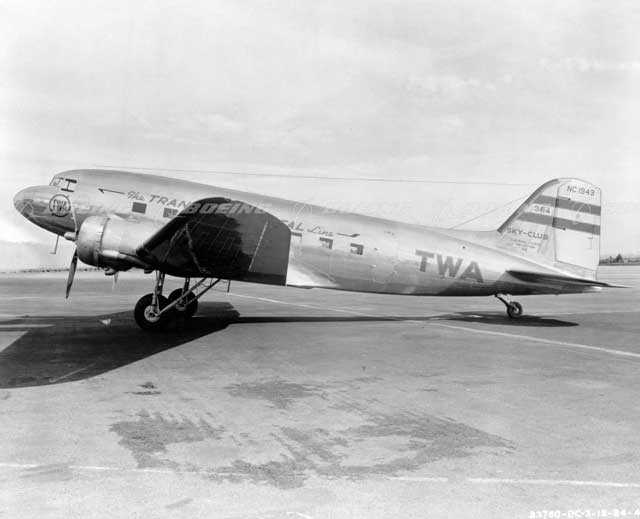 |
| Transcontinental and Western Air, Inc., Douglas DC-3-382 NC1943, the same type aircraft as NC1946. (Boeing Images). |
 |
| Scene of the crash of Transcontinental and Western Flight 3 on Potosi Mountain, Nevada. The point of impact was at an elevation of 7,770 feet (2,368 meters). (Bettman Archive via Lost Flights). |
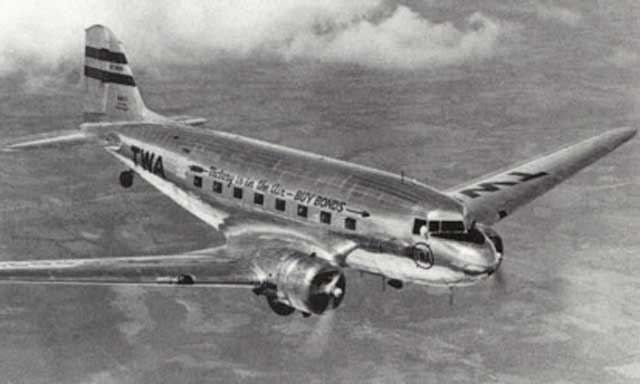 |
| Transcontinental and Western Air Douglas DC-3 NC1945, sister ship of NC1946, TWA Flight 3. (TWA). |
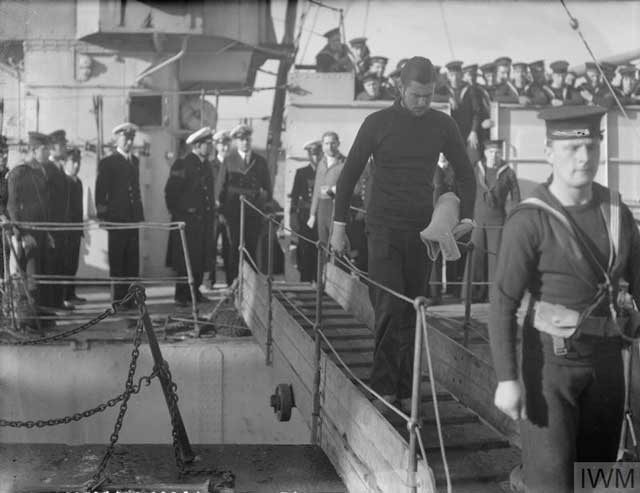 |
| "The German Commander of the U-boat, Oeberleutnant Zur See Horst Elfe, leaving the destroyer." Elfe was the commander of U-93, sunk by HMS Hesperus (which picked up the survivors) west of southern Spain on 15 January 1942. This photo was taken on 16 January 1942 when Hesperus reached Gibraltar (© IWM (A 8117)). |
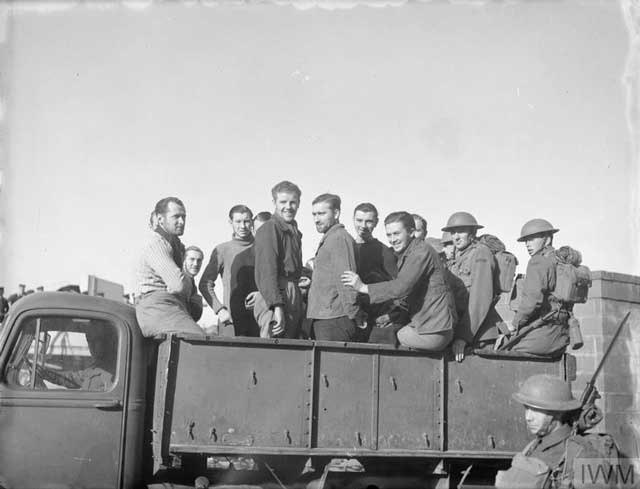 |
| Prisoners who were taken from U-93 are now on their way to a prison camp at Gibraltar, 16 January 1942. © IWM (A 8120). |
 |
| "Tamil workmen clearing debris in Singapore after a Japanese air raid, 16 January 1942." © IWM (HU 57224). |
 |
| "Australian soldiers at a coastal fortress near Brisbane, 16 January 1942. Close-range shot of a group of four Australian soldiers, wearing helmets, kneeling around a mortar that is about to be fired. A sergeant is kneeling behind the men supervising the activity. The location is undisclosed. Caption: 'Battle Station at an important coastal fortress near Brisbane (Information was taken from The Courier-Mail Archives, 16 January 1942 - picture not published)." |
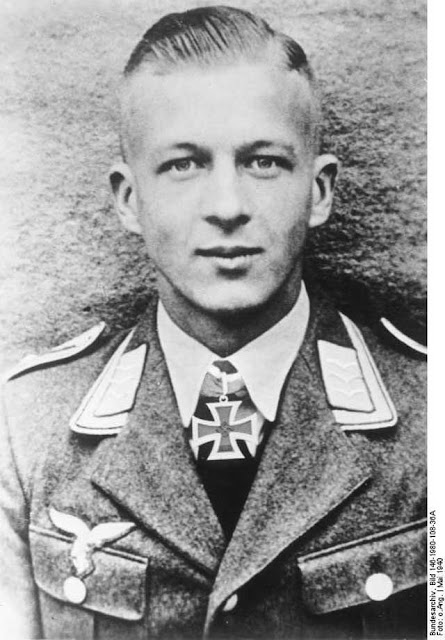 |
| Fallschirmjäger Feldwebel Helmut Arpke, born 20 March 1917 in Graudenz; killed in action 16 January 1942 near Schaikowka, Russia. This photo was taken in May 1940 when he won his Ritterkreuz (Federal Archive Bild 146-1980-108-36A). |
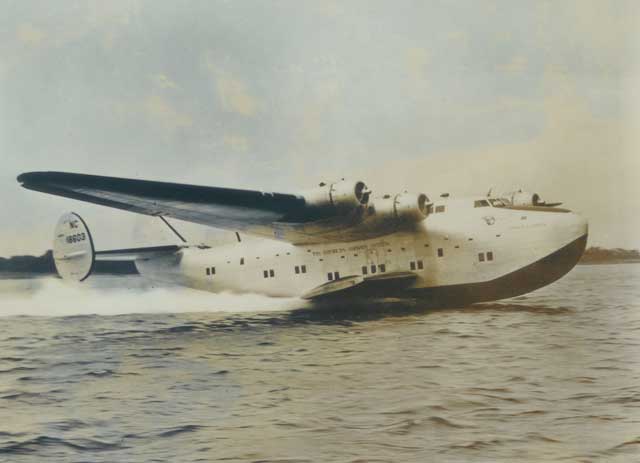 |
| A Boeing 314A flying boat of the type that took Winston Churchill across the Atlantic on 16 January 1942. |
1942
January 1942
January 1, 1942: Declaration By United Nations
January 2, 1941: Manila Falls to Japan
January 3, 1942: ABDA Command Announced
January 4, 1942: MacArthur on His Own in the Philippines
January 5, 1942: Soviets Plan General Offensive
January 6, 1942: US Army in Europe
January 7, 1942: Soviet General Offensive Opens
January 8, 1942: Hitler Sacks Hoepner
January 9, 1942: Battle of Dražgoše
January 10, 1942: Building the Jeep
January 11, 1942: Japan Takes Kuala Lumpur
January 12, 1941: Rommel Plans Counterattack
January 13, 1942: First Ejection Seat Use
January 14, 1942: Operation Drumbeat First Sinking
January 15, 1942: U-Boat Off NYC
January 16, 1942: Carole Lombard Crash
January 17, 1942: British Take Halfaya Pass
January 18, 1942: Soviet Paratroopers in Action
January 19, 1942: FDR Approves Atomic Bomb
January 20, 1942: The Wannsee Conference
January 21, 1942: Parit Sulong Bridge Battle
January 22, 1942: Parit Sulong Massacre
January 23, 1942: Japan Takes Rabaul
January 24, 1942: Battle of Makassar Strait
January 25, 1942: Kholm Surrounded
January 26, 1942: GIs Land in Europe
January 27, 1942: Battle of Endau
January 28, 1942: Rommel Takes Benghazi
January 29, 1942: First US Coast Guard Ship Sunk
January 30, 1942: Singapore Isolated
January 31, 1942: Army Group South Averts Disaster
2020





